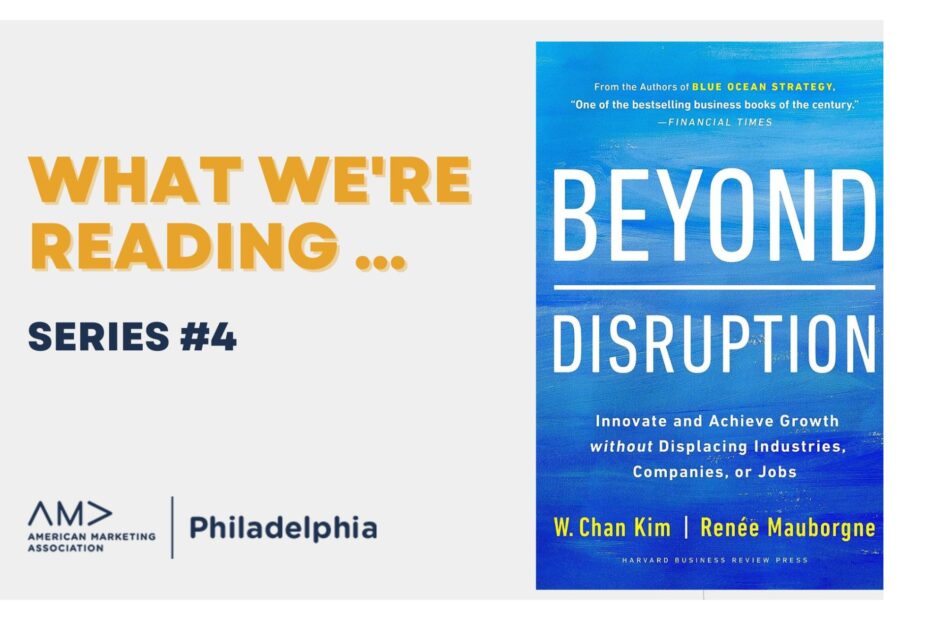How Innovative Companies Profit Without Disrupting Jobs or Communities
We all know that the world is changing fast. Recent technologies are transforming the way that businesses operate. Many business leaders think that beating the competition is the only way for innovative companies to profit and sustain growth.
Essentially, we are entering into a new era in which AI and other smart tools and machines are increasingly replacing a wide range of human jobs. A simple example is the fact that self-driving vehicles will potentially put -five million people out of work. Taxi, truck, delivery, bus and tractor drivers will have no gainful employment until new jobs are created. Research shows that when jobs are lost and people are not working, communities suffer, and depression rises along with drug use and crime rates.
But do innovative companies have to disrupt competitors and people’s lives to thrive?
The question of how business leaders can grow new markets without displacing industries, companies, or jobs is addressed in the most recent book Beyond Disruption: Innovate and Achieve Growth without Displacing Industries, Companies, or Jobs by international best-selling authors and professors W. Chan Kim and Renée Mauborgne. This is the third in their “blue ocean” business strategy series published by the Harvard Business Review Press.
“For the past twenty years, ‘disruption’ has been the battle cry of business: Disrupt this. Disrupt that. Disrupt or die. Calls for disruption have rung out across Silicon Valley, major corporate boardrooms, the media, and business conferences around the globe,” the authors point out in the book. “ Corporate leaders have continually been warned that the only way to survive, succeed, and grow is to disrupt their industries or even their own companies. Not surprisingly, many have come to see disruption as a near-synonym for innovation.”
The authors are asking us to rethink this beat-the-competition business model of disruption, which they describe as an outdated bloody “red ocean” of rivals fighting over a shrinking profit pool. Instead, they ask creative innovators like us to shift our thinking about innovation. They encourage us to embrace a new mindset of possible “blue oceans” of unlimited opportunities, where no competition yet exists.
The authors make the case that “what we ultimately achieve through our imagination and digitally enabled power, is dependent on the kind of problems we set out to solve and the kind of opportunities we set out to create.”
For example, medical advances that save lives ultimately result in aging populations that experience weakened family ties and increased loneliness. But there are many nondisruptive creative opportunities that could enrich their physical and emotional lives such as
providing personal care, addressing new health challenges, and leveraging their gained wisdom to empower the elderly.
Other examples include digital technology that is increasingly penetrating every aspect of our lives, meeting world energy demand, supporting rapid urbanization, creating ways to reduce waste and garbage, and developing mining in space for metals or even space tourism. All these areas require new creative solutions and present “blue oceans” of unlimited opportunities.
This new book is a continuation of the work they started in their earlier books. Blue Ocean Strategy was published in 2004 and Blue Ocean Shift published in 2017.
Authors W. Chan Kim and Renée Mauborgne have published many articles and been awarded countless honors for the influential and far-reaching global impact of their 30 years of research and ideas.
Innovation Creates a Leap in Customer Value
In the two earlier books, the authors presented case studies, models, and practical analytical tools spotlighting successful companies that created totally new market “blue ocean spaces”
while achieving rapid company growth. These companies implemented innovative thinking to create new products and opportunities in areas that are not in competition with others, creating a leap in customer value.
Cirque du Soleil is a classic example of a wildly successful nondisruptive effort. In the early 1980s in a small town near Quebec, the founders took elements of both the waning circus business and exclusive live theater performances and combined them into an offering that disrupted neither market. They kept the excitement and fun of the circus and eliminated the hard benches, sawdust, multiple rings, animal acts, and slapstick clown acts. They added elegant venues, artistic flair, sophisticated storylines, and classic dance, all infused with the intellectual wonder of the theater. They drew whole new blue ocean markets of families with children who were bored sitting passively in front of the computer. They were moviegoers who never thought of attending a live performance.
Today Cirque du Soleil employs more than 4000 people, performs on every continent except Antarctica and has awed over 90 million people including royalty and celebrities.
How “Nondisruptive Creation” Unlocks New Demand
This new book, just published in May 2023, takes the discussion a step further. In it, they take a close look at innovation. The authors encourage us to adopt this idea of “nondisruptive creation”. We aren’t given a perfect formula to follow, but rather a starting point for new and fresh conversations.
The company Music Not impossible (M:NI) started a new conversation with the opportunity for the deaf to enjoy music at home and at live concerts. A black vest worn over a shirt is equipped with a full sound system of 24 sleek, lightweight vibrators with various levels of vibration, which are found at the waist, neck, and shoulders. The M:NI designer team learned that we do not really hear with our ears. Our brains interpret the vibrations coming from our ears as sound. In the case of people who are deaf, the vibrations entering from the vest are interpreted by their brains as music. It has been reported that people wearing the vest, who have never heard music in their lives, have had tears running down their faces at live concerts. This is a profound example of creating a new market that adds value to the consumer, and to society at large.
In Part One, these “blue ocean” strategies are reviewed. Business leaders address the following questions when implementing this “nondisruptive creation” in their organizations: What exactly are we doing? Where are we going? What situations are we ultimately attempting to address? What have we done in the past and how can we address situations better in the future?
When Sesame Street began in 1967, creators answered these questions, they did not disrupt schools or libraries. Instead, they presented a previously unknown opportunity for children to learn while having fun.
Today, preschool entertainment is a multi-billion-dollar industry. Sesame Street is the most successful, longest-running children’s television show and has won many Emmys and 11 Grammy awards.
The authors also present proof that the number of jobs lost and jobs created is not predetermined. They assert that the outcomes and situations we create going forward are based on the actions we take or don’t take, and the policies we apply or don’t apply. “If there is a widespread rush toward labor-saving and cost-saving technologies, especially AI, without a compensating increase in new jobs,” state the authors, “a socially dangerous situation can exist until new jobs are created to offset the loss. Our challenge and moral imperative as creative problem solvers is to find opportunities to create without disruption.”
How to Implement Nondisruptive Creation
In Part Two, readers are given action steps to implement non-disruptive creation.
Step One: Take the right perspective.
Instead of playing the game better, let us look to create a new game. We achieve growth through value innovation, that great leap in value that can be passed to clients and customers.
Step Two: Identify a nondisruptive opportunity.
Be clear that the aim is not to disrupt or compete. Find a brand-new problem to solve.
Step Three: Unlock a particular opportunity.
Many nondisruptive opportunities have been overlooked because they challenge the current conventional assumptions held in an industry. The authors encourage us to choose a particular opportunity, to understand these underlying assumptions, to challenge them, and to reframe them.
Step Four: Realize the opportunity.
We are encouraged to think for ourselves and be prepared for the disparaging comments by the pundits. Never before have we had the ability to become an expert ourselves by tapping into the wide breadth of information available in podcasts, videos, digital articles, and digital books.
Step Five: Build a better world together.
Here, the authors present areas of untapped future growth such as:
- How to protect the sanctity of private thoughts and the right to express dissenting views
- How to meet growing world energy demands
- How to counter the rising production of waste
- How to create a more sustainable world for our children and grandchildren
Ultimately, it comes down to asking “What is our place in the universe?” And then deciding “The world is what we make it.”
Again, the book does not give us a fix-all formula but rather gives us an opportunity to start new conversations and take new perspectives.
I recommend this fascinating read. It opened my eyes to our role as marketers in the world. We can make a difference by opening hearts and minds to the possibilities!
If this article struck a nerve or shifted your perspective, you may want to check out our previous blog post that explores the first book in the Blue Ocean Strategy series.
If this sparked your desire to make a difference, help keep the conversation going! Click below to join AMA Philadelphia’s growing LinkedIn community. What are you reading? Please share with us in the comments.
Looking to connect with other marketers in the Philly area to talk strategy and all things marketing? Come to the next Marketing Mix @6 near you. Check out our events page below to get your tickets now!


